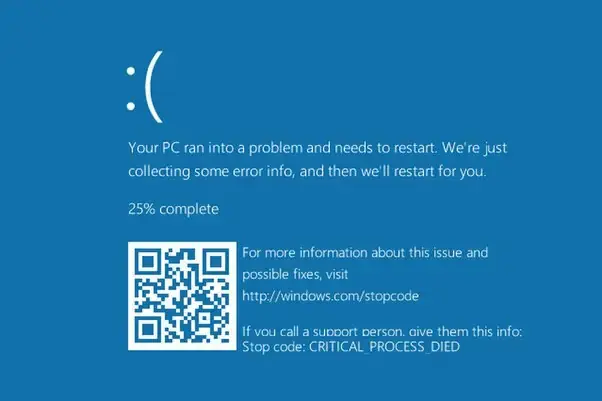Microsoft Outage: Recent BSOD Issues
Estimated reading time: 8 minutes
The Microsoft Outage due to Blue Screen Of Death BSOD represents a critical error that forces Windows systems to halt. Recent incidents have shown a significant increase in these errors. On July 19, 2024, many businesses reported widespread BSOD occurrences. This surge has disrupted operations across various sectors. Airlines, banks, and online services faced major outages. The faulty CrowdStrike update played a crucial role in triggering these widespread system crashes. As a result, millions of companies faced significant productivity losses, along with a sharp increase in IT support costs. Furthermore, these disruptions not only affected daily operations but also created additional challenges for businesses striving to maintain efficiency. Consequently, organizations had to allocate extra resources to troubleshoot and resolve these unexpected technical issues.
Understanding Microsoft Blue Screen Of Death BSOD
What is Microsoft Blue Screen Of Death BSOD?
Definition and history
The Microsoft Blue Screen Of Death BSOD represents a critical system error in Windows operating systems. When the system encounters a severe issue, it halts operations and displays a blue screen with an error message. This phenomenon first appeared in Windows 1.0 in 1985. Over the years, the BSOD has become synonymous with system crashes and critical errors.
Common causes
Several factors can ultimately trigger the Microsoft Blue Screen of Death (BSOD). For instance, hardware failures often play a major role in causing these critical errors. Additionally, issues with drivers, particularly graphics drivers from Intel, frequently contribute to BSODs. Moreover, software conflicts and corrupt system files can significantly increase the likelihood of these crashes. Furthermore, overheating poses another serious risk, as it can damage components and lead to unexpected shutdowns. Lastly, malware infections can further exacerbate the problem by corrupting essential system files and disrupting normal operations. Communication problems between hardware components can also result in a BSOD.
Technical Explanation
How BSOD occurs
The Microsoft Blue Screen of Death (BSOD) typically occurs whenever the Windows operating system detects a condition that severely compromises its safe operation. As a result, the system immediately halts all processes in order to prevent further damage. Additionally, This sudden stop provides users with an opportunity to identify and effectively address the underlying issue. Furthermore, the screen prominently displays an error code along with a brief description of the problem, which helps in diagnosing the cause and finding a potential solution.
Diagnostic codes and their meanings
Diagnostic codes on the Microsoft Blue Screen Of Death BSOD provide insights into the nature of the error. Each code corresponds to a specific issue. For example, 0x0000007B indicates an inaccessible boot device, while 0x00000050 points to a page fault in nonpaged area. Additionally, Understanding these codes helps IT professionals diagnose and resolve the problems more efficiently.
Recent Surge in BSOD Incidents

On July 19, 2024, a large number of businesses reported a significant surge in Microsoft Blue Screen of Death (BSOD) occurrences. This widespread disruption was primarily triggered by a faulty CrowdStrike update. More specifically, the update impacted Windows 10 and 11 systems that were running the endpoint security software. As a result, major industries faced severe operational challenges.
For instance, airlines such as Delta, United, and American Airlines experienced widespread flight groundings, leading to delays and frustration among passengers.
Additionally, Sky News encountered broadcasting disruptions, affecting its ability to deliver timely news updates. Furthermore, supermarkets faced payment processing failures, which not only hindered transactions but also led to considerable customer dissatisfaction.
Notable cases in different industries
The technology sector experienced significant disruptions, particularly in software development, as system crashes interfered with coding and deployment processes. Additionally, hardware malfunctions became increasingly prevalent, further exacerbating technical difficulties. Meanwhile, the healthcare industry faced severe interruptions in medical services, making it challenging for professionals to access critical patient data. As a result, patient safety risks escalated due to unexpected system failures. Furthermore, the financial services sector encountered considerable downtime in banking operations, leading to delays in transactions and customer frustrations.
Security concerns also intensified as organizations struggled to mitigate vulnerabilities caused by the BSOD incidents.
Moreover, emergency services reported operational challenges, which hampered their ability to respond efficiently to critical situations. Ultimately, the widespread impact of these disruptions underscored the severity of the situation, emphasizing the urgent need for robust IT solutions.
User experiences from affected businesses
Many businesses shared their experiences with the Microsoft Blue Screen Of Death BSOD. A major airline executive stated, “The BSOD incidents grounded our flights, causing significant delays and financial losses.” A supermarket manager noted, “Payment processing issues led to frustrated customers and lost sales.” An IT professional from a healthcare provider mentioned, “System crashes disrupted medical services, putting patient safety at risk.”
Impact on daily operations
The Microsoft Blue Screen Of Death BSOD had a profound impact on daily operations. Airlines faced flight cancellations and delays. Banks struggled with transaction processing. Supermarkets dealt with payment failures. TV broadcasters experienced difficulties in live broadcasting. Emergency services encountered response delays. Businesses worldwide faced productivity losses and increased IT support costs. The global IT outage caused by the BSOD incidents affected millions of users across different sectors.
Impact of Microsoft Outage on Multiple Industries

Technology Sector
Software development disruptions
The Microsoft Blue Screen Of Death BSOD caused significant disruptions in the technology sector. Many software development projects faced delays due to frequent system crashes. Developers lost unsaved code and progress, leading to increased frustration and decreased productivity.
The abrupt nature of the BSOD incidents resulted in corrupted files, further complicating the development process.
Hardware malfunctions
Hardware malfunctions also became prevalent due to the Microsoft Blue Screen Of Death BSOD. The faulty CrowdStrike update caused many systems to enter a recovery boot loop, preventing proper startup. This issue forced IT departments to spend considerable time troubleshooting and repairing affected machines. The increased workload strained resources and delayed other critical tasks.
Healthcare Industry
Interruptions in medical services
The healthcare industry experienced severe interruptions in medical services due to the Microsoft Outage of Blue Screen Of Death BSOD. Hospitals and clinics reported system crashes that disrupted patient care. Medical staff faced challenges accessing electronic health records, leading to delays in treatment. The BSOD incidents compromised the efficiency of healthcare providers, impacting overall service delivery.
Risks to patient safety
Patient safety risks increased significantly due to the Microsoft Outage of Blue Screen Of Death BSOD. The system crashes affected medical devices and monitoring systems, posing potential dangers to patients. Critical data loss during the BSOD incidents raised concerns about the accuracy of medical records. Healthcare providers had to implement manual processes, which increased the likelihood of errors.
Financial Services
Downtime in banking operations
The financial services sector faced considerable downtime in banking operations due to the Microsoft Outage of Blue Screen Of Death BSOD. Banks reported issues with transaction processing, causing delays and customer dissatisfaction. The system crashes affected ATMs and online banking platforms, leading to widespread inconvenience. Financial institutions had to allocate additional resources to address the outages.
Security concerns
Security concerns rose sharply in the financial services sector due to the Microsoft Blue Screen Of Death BSOD. The abrupt system crashes heightened the risk of data breaches and unauthorized access. Banks had to implement emergency measures to protect sensitive customer information. The increased focus on security diverted attention from other essential tasks, affecting overall operational efficiency.
Responses and Solutions
Industry Reactions
Many companies issued public statements regarding the Microsoft Blue Screen Of Death BSOD incidents. Delta Airlines reported significant disruptions in flight schedules. The airline grounded numerous flights due to system crashes. United Airlines echoed similar sentiments, highlighting operational challenges.
Sky News faced broadcasting issues, impacting live news delivery.
Supermarkets like Walmart experienced payment processing failures, frustrating customers.
Measures taken to mitigate issues
Affected companies took immediate measures to address the Microsoft Blue Screen Of Death BSOD problems. Airlines implemented manual check-in processes to minimize delays. Additionally, Sky News resorted to backup broadcasting systems to continue live coverage. Supermarkets deployed additional staff to handle payment issues manually.
IT departments across various sectors worked tirelessly to identify and resolve the root causes of the BSOD incidents.
Technical Solutions for Microsoft Outage
Software patches and updates
Microsoft and CrowdStrike released urgent software patches to fix the Microsoft Blue Screen Of Death BSOD issues. These patches aimed to correct the faulty update that triggered the system crashes. IT professionals recommended installing these updates immediately. Regular software maintenance became a priority to prevent future occurrences. Companies also reviewed their update protocols to ensure smoother rollouts.
Hardware replacements and upgrades
Hardware replacements and upgrades became necessary in many cases. The Microsoft Blue Screen Of Death BSOD caused some systems to suffer irreparable damage. IT departments replaced affected hard drives and other components. Upgrading outdated hardware reduced the likelihood of future BSOD incidents. Companies invested in more robust systems to enhance overall stability and performance.
Expert Opinions about Microsoft Outage
Insights from IT professionals
IT professionals provided valuable insights into the Microsoft Blue Screen Of Death BSOD. They identified multiple triggers, including hardware failures and driver issues. Overheating and software conflicts also played significant roles. Additionally, Experts emphasized the importance of regular system maintenance. Preventative measures could mitigate the risks associated with BSOD incidents.
“The blue screen of death can be caused by any problem that causes Windows to stop running safely,” stated an IT expert.
“The BSOD can be triggered by software problems, such as incompatible driver updates, or hardware problems, like a hard drive that needs formatting or overheating caused by overclocking your CPU.”
Recommendations for businesses
Experts offered several recommendations for businesses to avoid Microsoft Blue Screen Of Death BSOD issues. Regularly updating software and drivers remained crucial. Monitoring system temperatures helped prevent overheating. IT departments should conduct routine hardware checks.
Implementing robust backup systems ensured data protection during crashes.
Training staff on troubleshooting techniques improved response times during incidents. The blog discussed the recent surge in BSOD incidents and their widespread impact on various industries. Addressing BSOD issues remains crucial for maintaining operational continuity and user confidence. Businesses must prioritize regular system maintenance and implement robust backup procedures to prevent data loss. Staying updated with software patches and hardware upgrades can mitigate future disruptions. Additionally, Companies should remain vigilant and proactive in managing IT systems to ensure smooth operations.
To stay updated with the latest developments in STEM research, visit ENTECH. This is our digital magazine for science, technology, engineering, and mathematics.
At ENTECH, you’ll find a wealth of information. We offer insights and resources to fuel your curiosity. Our goal is to inspire your passion for new scientific discoveries.






